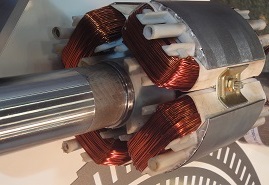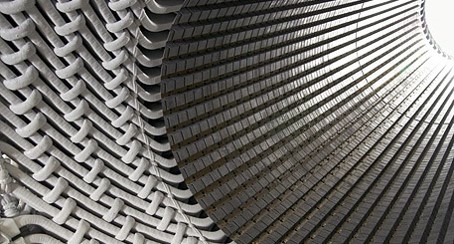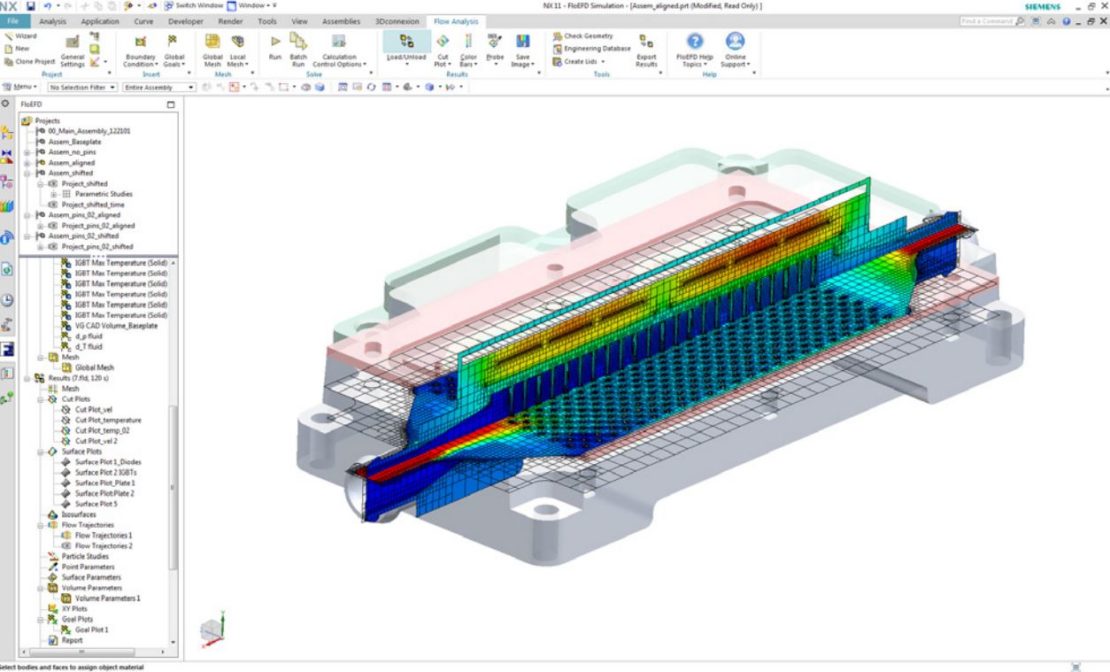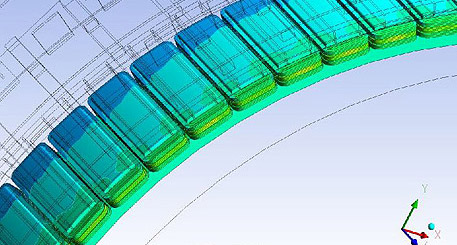
Medium-sized motors need active cooling, this can be implemented with a fan or with a water cooling.
read more

The coil ends of large motors and generators are mechanically supported in a complex manner and stiffened with one another. It is
very complex to perform a flow or thermal simulation for such geometry.
read more
e-cooling has calculated in 2022 and 2023 the ventilation and cooling of two hydro generators with an output of 16 and 20 MW. Both generators were built
in the 1960s and have been operated since then without any heating problems. The CFD calculation of the original design showed very high ventilation losses:
for the first due to the axial shaft fans and for the second due to the internal rotating steel construction. The ventilation losses of the first could be greatly
reduced through optimization measures. The second one is still being optimized.

Air conditioning or decontamination of a room is important enough to be dimensioned with CFD right from the start of the project. This allows us
to calculate and to visualize the flow conditions in the entire room and the dissemination of the contaminants.
read more

Mr. Segond has been working as a freelance consulting engineer since 2011. Back then he benchmarked the different CFD tools before deciding on FloEFD.
read more

Mr. Karim Segond,
our freelance expert for 3D CFD flow and thermal calculations,
was interviewed during the Simcenter Conference.

The flow and thermal processes in large motors and generators are extremely complex and therefore cannot be satisfactorily described by
flow and heat source lumped circuits.
read more

Compliance with the maximum allowed temperatures of the IGBT, diodes and
MOSFET Chips is necessary, otherwise the chips are exposed to thermo-mechanical loads; this would have a drastic impact on the life
expectancy of the materials. An effective cooling circuit is essential in
order to achieve the highest power densities in small spaces. Here, the 3D
Computational Fluid Dynamics is an ideal tool. Possible hotspots can be localized with CFD calculations and thus avoided.
read more
At switching frequencies below 10 Hz, the ON and OFF switching is so
slow that it causes a time-dependent temperature behavior of the
transistors.
read more






